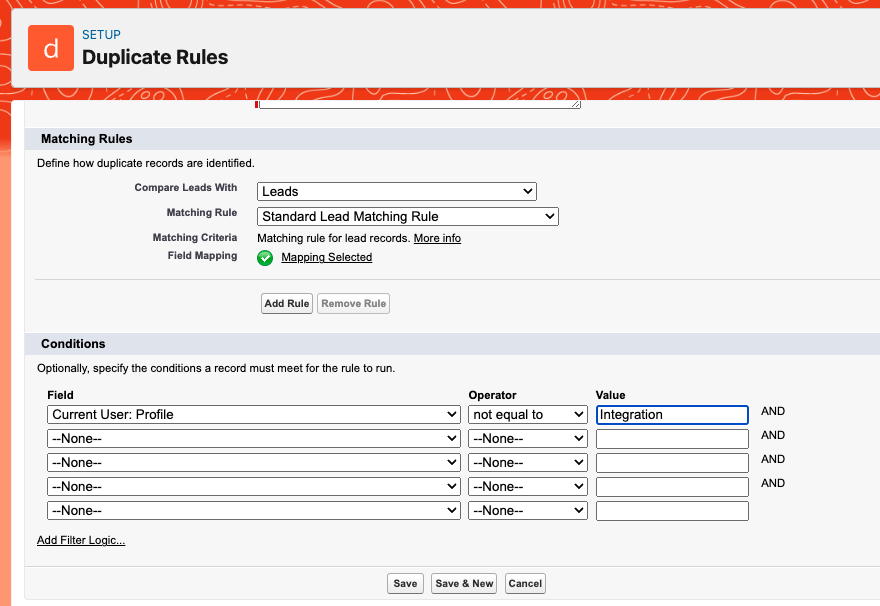What are Salesforce Duplicate Rules?
A Salesforce duplicate rule is a mechanism designed to prevent the creation of duplicate records within the Salesforce platform. It operates by defining criteria that are used to identify potential duplicates when new records are being entered or existing records are being updated. These criteria typically include specific fields, such as email addresses or account names, which are crucial for unique record identification.
When a user attempts to create or modify a record, the duplicate rule evaluates the entered data against the defined criteria. If a match is found with existing records, the system can trigger alerts, prevent the creation/update, or provide suggestions for potential duplicates. Duplicate rules are instrumental in maintaining data accuracy and integrity within Salesforce, reducing the risk of redundant information and ensuring a clean and reliable database.
What is a Salesforce Validation Rule?
Excluding the Integration P from Duplicate / Validation Rules
- Go to Salesforce Setup and search for Duplicate Rules or go find the validation rule you wish to edit in your Object Manager.
- Click into the specific Duplicate Rule / Validation Rule you would like to add an exclusion for.
- Click Edit
- Under the Conditions section, create a condition that excludes your Integration User from the rule.
-
-
- Under Field, select Current User: Username or Current User; Profile
- You may select a different Current User: _____ field if desired, such as Current User: Alias, or Current User: Email
- Under Operator: select not equal to
- Under Value: enter the Username for the LeanData Integration User. This is typically in the form of an email address.
- Under Field, select Current User: Username or Current User; Profile
-
If you have other rules, you will need to include this exclusion rule with an AND condition along with you other rules.
Please note: this exclusion will not work for Scheduled One-Time Routing Jobs that are initiated by anyone other than the Integration User.

